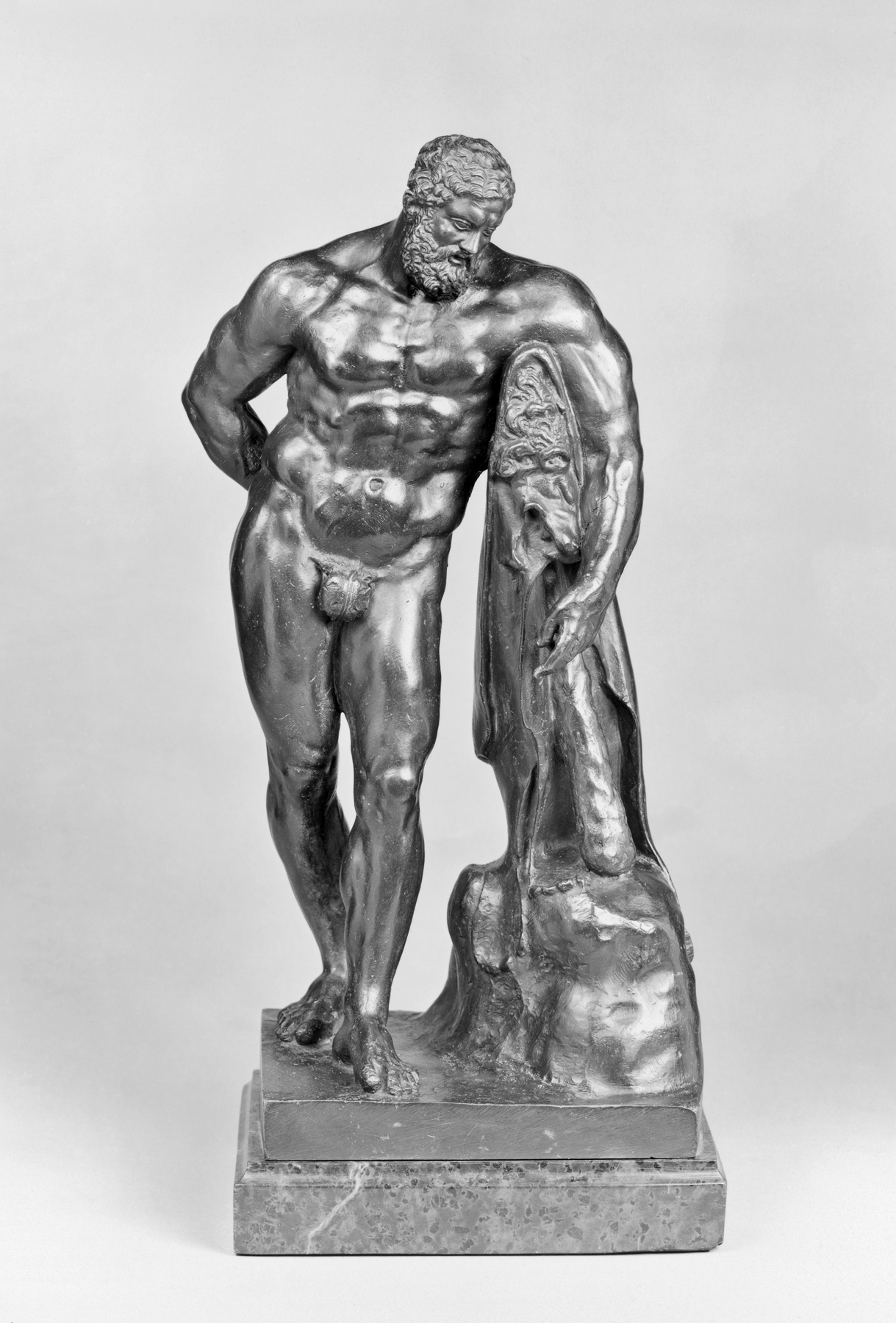The Farnese Hercules
This statuette, depicting the demigod Hercules resting between his labors, is a reduction of a colossal marble statue (over 10 ft. high) executed by the sculptor Glykon in the early 3rd century. It, in turn, was modeled after a lost original 4th-century BC bronze statue by the famous Greek sculptor Lysippus. In 1546, Glykon's statue was discovered during an excavation in Rome and was displayed in the garden of the palace belonging to the Farnese family, hence its name (it is now in the National Archeological Museum, Naples).
The statue, with its impressive rendering of Hercules's physique, was instantly famous, and admiration for it was reflected in the widespread ownership of small and full-size copies. While in Rome, the great Flemish painter Peter Paul Rubens (1576-1640) made drawings of the colossus that he used for his paintings. There was even a full-size plaster cast in a 17th-century collection in Antwerp.
Provenance
Provenance (from the French provenir, 'to come from/forth') is the chronology of the ownership, custody, or location of a historical object. Learn more about provenance at the Walters.
Raoul Heilbronner, Paris, by purchase; Henry Walters, Baltimore, 1909, by purchase, Walters Art Museum, 1931, by bequest.
Exhibitions
| 1984 | Children of Mercury: The Education of Artists in the Sixteenth and Seventeenth Centuries. Brown University, Bell Gallery, List Art Center, Providence. |
Conservation
| Date | Description | Narrative |
|---|---|---|
| 11/1/1958 | Treatment | cleaned |
| 8/24/1977 | Treatment | cleaned; loss compensation; other |
| 8/24/1977 | Treatment | cleaned |
| 7/20/1983 | Loan Consideration | examined for loan |
| 1/6/1984 | Examination | examined for loan |
| 2/10/1984 | Treatment | cleaned; repaired; other |
| 12/17/1987 | Treatment | examined for condition; cleaned |
Geographies
Italy, Rome
(Place of Origin)
Italy, Florence (Place of Origin)
Measurements
H: 13 1/4 × W: 6 5/16 × D: 4 15/16 in. (33.6 × 16 × 12.5 cm)
Credit Line
Acquired by Henry Walters, 1909
Location in Museum
Accession Number
In libraries, galleries, museums, and archives, an accession number is a unique identifier assigned to each object in the collection.
In libraries, galleries, museums, and archives, an accession number is a unique identifier assigned to each object in the collection.
54.727



